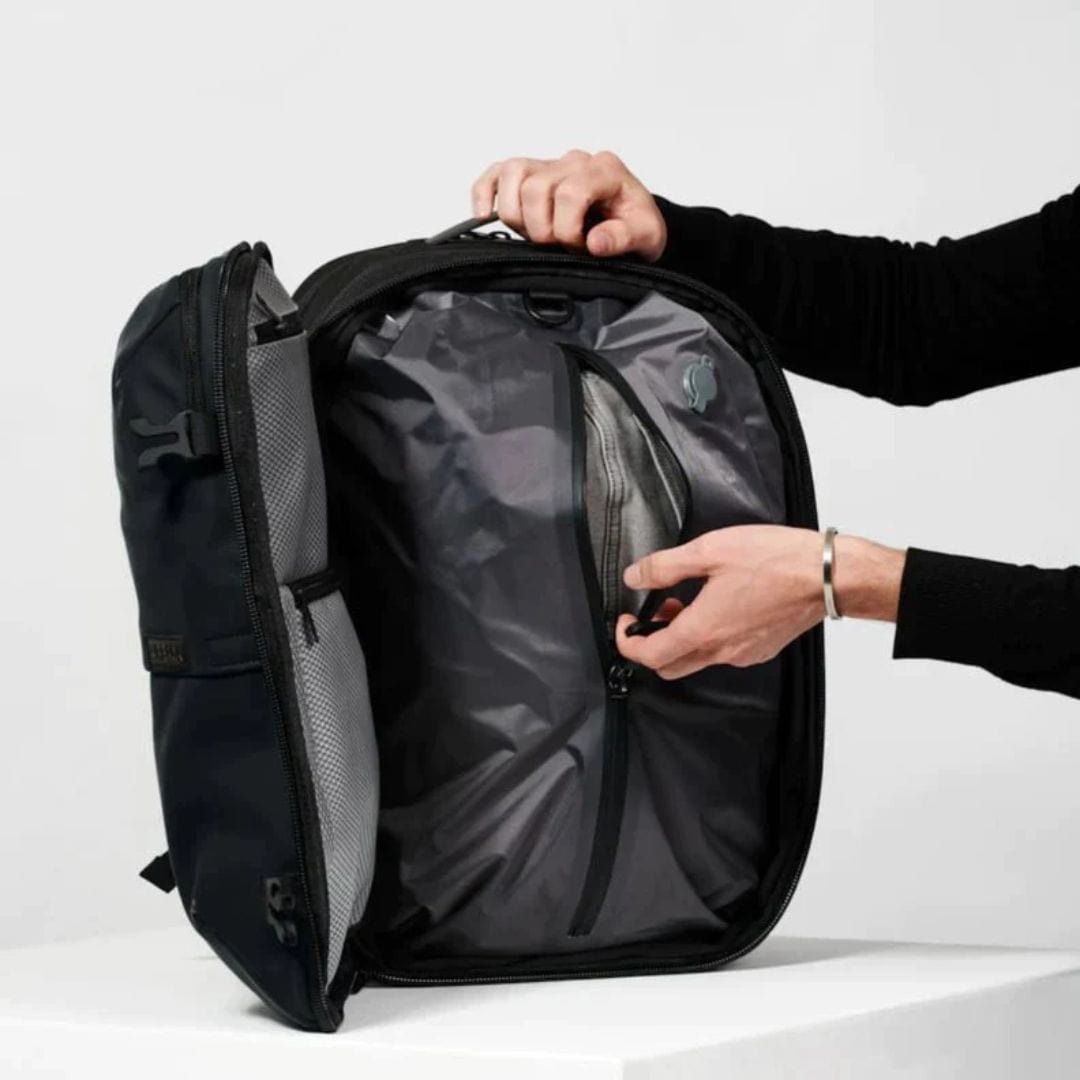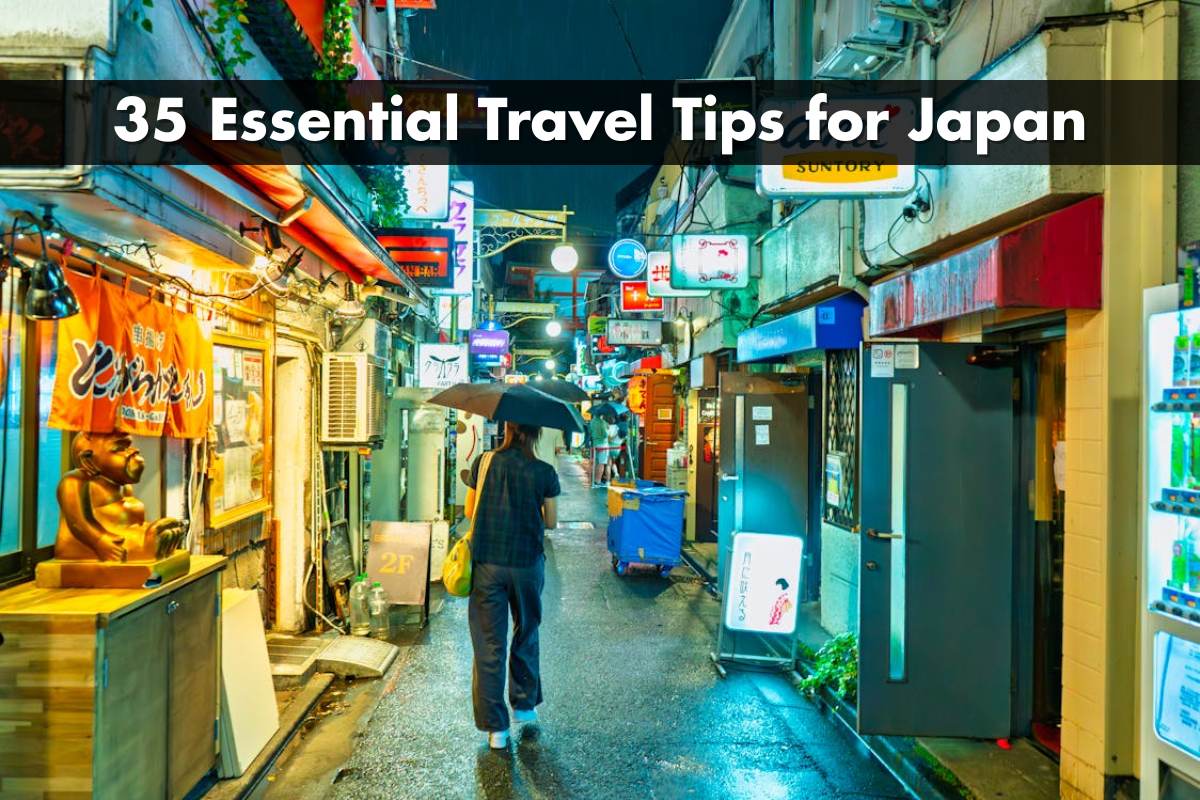Dreaming of exploring Japan’s neon-lit cities ancient temples and serene countryside? Planning your trip can feel overwhelming with so many must-see spots and cultural quirks to consider. Every year millions visit Japan and smart planning helps you make the most of every moment without the stress.
Choosing the Right Travel Backpack
Selecting a travel backpack for Japan simplifies your journey through crowded stations and tight train compartments. Small backpacks fit overhead racks on trains and shinkansen, letting you move quickly, even during busy transfers between cities like Kyoto and Osaka. Lightweight options, such as 30–40L backpacks, enable easy navigation through stations that often lack elevators or escalators.
Organizing your items with packing cubes streamlines access to essentials and maximizes available space in your backpack. Using a backpack with multiple compartments keeps travel documents, electronics, and weather-specific items like rain jackets within easy reach. Many travelers pack a collapsible daypack, using it for daily excursions once settled—examples include sightseeing in Tokyo or shopping in Osaka.
Limiting your main luggage to a small rolling suitcase and a Carry On travel backpack gives flexibility, especially if you plan to buy souvenirs. Booking accommodations with laundry lets you pack even lighter; for multi-destination itineraries, this reduces the burden of carrying large bags. Choosing backpacks with padded straps and ergonomic support ensures comfort during full days of exploring Japan’s urban and rural destinations.
Essential Planning Tips for Japan
Choosing the best times to visit and planning reservations in advance streamlines your Japan experience. Efficient preparation opens opportunities to enjoy popular attractions, seasonal events, and local favorites with less stress.
When to Visit and How Long to Stay
Selecting your travel dates and itinerary length shapes your overall experience in Japan. Spring (March–May) draws crowds for cherry blossoms, and autumn (October–November) attracts visitors for vibrant foliage. Off-peak periods in winter (December–February) and summer (June–August) offer fewer tourists and sometimes lower prices, though summer heat and winter cold can be intense. Major holidays, including Golden Week (late April–early May), Obon (mid-August), and New Year (late December–early January), increase crowds and restrict availability across hotels and transportation.
Planning a stay of 7–14 days covers most major cities like Tokyo, Kyoto, and Osaka, and allows day trips to rural areas. Short stays under 5 days limit exploration to one region, while trips of two weeks or more let you explore both urban and remote destinations.
What to Book in Advance
Booking critical elements before arrival secures access and reduces last-minute stress. Reserve accommodations and popular attraction tickets 1–3 months ahead, especially for highly rated hotels and sought-after experiences such as teamLab exhibitions or Shibuya Sky in Tokyo. Train passes, including the Japan Rail Pass, are best bought before entry into Japan for discounts and convenience. Tours, special events, and tickets for seasonal festivals also fill quickly around peak travel periods.
Secure reservations for notable restaurants, as many top dining spots require bookings weeks in advance. If you travel during peak periods or plan to visit popular regions, ensure transport, hotels, and key activities are locked in before your departure.
Navigating Transportation in Japan
Japan operates one of the world’s most advanced and efficient transportation systems, connecting cities, rural areas, and sightseeing spots seamlessly. You’ll find that understanding local transit makes your trip smoother and opens up more destinations.
Using Public Transit and Travel Cards
Public transit in Japan covers more than 30,000 km of rail lines, including subways, local trains, and buses in major cities like Tokyo and Osaka. English-language signage and announcements support easy navigation for international visitors. IC cards—such as Suica, Pasmo, and Welcome Suica—simplify travel across almost all urban transportation networks. Load these rechargeable cards at station kiosks or convenience stores for fast tap-and-go access on subways, city buses, and local trains. You can also use IC cards for small purchases at shops, vending machines, and some restaurants.
Tokyo’s subway has multiple lines run by different operators, with clear route maps and color-coding. Most regional centers offer similar IC card compatibility, allowing you to travel on integrated systems without buying separate tickets for different companies. Mobile route planning apps like Google Maps, Hyperdia, or NAVITIME Japan Travel update in real time and display platform details, connections, and time estimates—making complex transfers less confusing.
Booking Trains and Other Options
Trains in Japan arrive on schedule, so standing on the platform early is standard practice. For long-distance journeys, the Japan Rail (JR) Pass covers shinkansen bullet trains, regional express services, and select local lines. Buy the JR Pass before arriving in Japan—it's available exclusively to foreign travelers and valid for set durations (7, 14, or 21 consecutive days). The JR Pass pays off if your itinerary includes multiple intercity trips, such as Tokyo–Kyoto–Hiroshima. Regional passes, like the Kansai Railway Pass or Tokyo Subway Ticket, offer unlimited rides within specific areas at lower costs than nationwide passes.
Not all train routes accept the JR Pass; many city subways and private railways require separate tickets or compatible IC cards. For cities and regions not covered by major rail passes, individual train tickets, regional day passes, or even city-specific metro passes may suit short stays best. Downloadable apps and station kiosks let you compare options, reserve seats, and check real-time availability. Long-distance night buses and taxis complement the rail network for off-hour or remote journeys, with buses offering economical alternatives and taxis suiting short urban trips.

Packing and Preparing for Your Trip
Planning your packing for Japan makes each day more comfortable and smooth, no matter the season or destination. Tailor your gear to the changing weather and active travel days for a stress-free journey.
What to Pack and Wear
Packing for Japan means focusing on versatile layers and practical travel essentials. Temperatures shift dramatically between seasons and regions. For autumn, pack lightweight sweaters, long-sleeve shirts, and a quality jacket. Winter in Hokkaido or the Japanese Alps requires thermal layers, gloves, scarves, and an insulated coat.
- Shoes: Slip-on shoes save time since you'll remove them in homes, many hotels, some temples, and certain restaurants.
- Weather protection: Pack a rain jacket, especially if visiting June–October, and compact umbrellas for summer showers.
- Comfort gear: Include a handkerchief, sanitizer, hydro bandages, and a small coin purse. You may also bring a mini muscle massager for long walking days.
- Electronics adapters: Japan uses Type A two-prong plugs and a 100V supply. North American devices with Type A plugs (100–120V) are compatible. Bring a universal travel adapter if needed.
- Seasonal examples: Spring requires a light jacket and sweater, summer needs breathable shirts, sunglasses, and sunscreen, and winter calls for thick socks and durable boots.
Accommodations with laundry enable lighter packing, especially for longer stays. Always check weather averages for your specific travel months and adjust clothing accordingly.
Staying Connected and Online
Staying connected in Japan helps you navigate, translate, and stay in touch. Free WiFi exists in hotels and some cafes, but coverage is inconsistent and often unsecured.
- Pocket WiFi: Order a device for reliable, unlimited internet access nationwide. Pick up at Japanese airports or have it delivered to your hotel.
- SIM cards: Purchase or pre-order a Japanese SIM card if your phone is unlocked, or use an eSIM for instant activation.
- Travel apps: Download offline Japanese Google Translate and navigation apps. These support tasks like reading menus, finding transit routes, and translating signs.
- Multiple devices: Pocket WiFi connects several smartphones, tablets, or laptops at once, making it cost-effective for groups or tech-heavy travelers.
Plan your digital connectivity in advance, especially during peak seasons, to avoid data roaming fees or lack of service. Ordering online before your arrival ensures ready access from day one.
Money Matters and Budgeting
Planning your travel finances in Japan ensures a smoother trip, especially since payment options and prices vary widely across the country. Understand how to manage money, make payments, and cut costs during your visit for a stress-free experience.
Using Cash, Cards, and ATMs
Japan remains a cash-centric society, with cash required at many bars, markets, small shops, and restaurants—especially outside major cities. Carry Japanese yen since US dollars aren’t accepted for payments. Withdraw cash easily at 7-Eleven and Lawson convenience stores, where ATMs accept most foreign debit and credit cards. These machines often show minimal withdrawal fees, ranging from 110 to 220 JPY per transaction, and are located in airports, train stations, and city centers.
Credit and debit cards gain wider acceptance at hotels, department stores, and larger restaurants in cities like Tokyo, Kyoto, and Osaka, yet many venues still prefer cash for small purchases, entry fees, and neighborhood dining. Before using cards, confirm with staff if they’re accepted to avoid confusion. Notify your bank of international travel and choose transactions in yen at ATMs to get the best exchange rate through your home bank.
Saving on Travel and Everyday Expenses
Budget-conscious travel in Japan becomes easier by selecting smart accommodation, transport, and dining options. Capsule hotels, hostels, and budget business hotels often cost under 6,000 JPY per night, while ryokan offer traditional stays for 15,000–25,000 JPY nightly, usually including dinner and breakfast.
Transportation savings are significant with prepaid transit cards and regional rail passes. For multi-city itineraries, the Japan Rail Pass covers unlimited rides on JR trains and select buses for periods starting at around 29,650 JPY for 7 days. Overnight buses connect major cities for far less than Shinkansen fares and save additional accommodation costs.
Meal costs average between 500–2,500 JPY per dish, with daily totals up to 5,000 JPY at budget venues. Grab breakfasts from konbini (convenience stores) or try set meals at local eateries for affordable and filling options. Sightseeing discounts and city passes further lower entry fees for popular attractions.
|
Expense Category |
Budget Price Range (JPY) |
Example/Notes
|
|---|---|---|
|
Capsule/Hostel Accommodations |
2,000–6,000 |
Urban capsule hotels, hostels |
|
Midrange Hotel/Ryokan |
15,000–25,000 |
Includes meals at ryokan |
|
Japan Rail Pass (7 days) |
29,650 |
Unlimited JR travel |
|
Food (per meal) |
500–2,500 |
Konbini, set meals, casual dining |
|
Daily Food Total |
Up to 5,000 |
Includes three meals |
|
ATM Withdrawal Fee |
110–220 |
Per transaction at convenience stores |
Optimize your daily spending by prioritizing cash usage, searching out meal and travel deals, and utilizing transit passes, enabling you to experience Japan’s diverse offerings on any budget.
Japanese Culture and Etiquette
Understanding Japanese culture and etiquette enhances your travel experience and ensures smooth daily interactions. Cultural respect is valued everywhere, from bustling cities to countryside villages.
Communication and Language Basics
English proficiency in Japan varies by region, with major cities offering more support than rural areas. Basic Japanese greetings and polite phrases—such as arigatou gozaimasu (thank you) and sumimasen (excuse me)—help foster goodwill. Voice translation and camera translation apps like Google Translate bridge language gaps for menus, signage, and short conversations. Common courtesy includes speaking softly in public, especially on buses, trains, and in restaurants.
Useful Japanese Words and Phrases
|
Phrase |
Japanese (Romaji) |
English Meaning
|
|---|---|---|
|
ありがとう ございます |
arigatou gozaimasu |
Thank you |
|
すみません |
sumimasen |
Excuse me / Sorry |
|
はい |
hai |
Yes |
|
いいえ |
iie |
No |
|
お願いします |
onegaishimasu |
Please |
Learning these basics gives you access to more seamless interactions with locals.
Social Customs and Travel Manners
Politeness and restraint drive most Japanese social interactions. Bowing signals respect in greetings, thanks, and apologies. Slight bows work for casual situations; deeper bows convey formality. Direct handshakes are rare but aren't generally seen as rude.
Dining etiquette includes not pointing or passing food with chopsticks, not sticking them upright in rice, and avoiding loud eating noises—except for noodles, where slurping indicates enjoyment. Eating or smoking while walking is frowned upon; use designated areas or benches. Tipping isn't customary and can seem disrespectful; expressing gratitude verbally suffices.
Remove shoes when entering homes, temples, some restaurants, and accommodation. Slippers are often provided, and socks or bare feet are appropriate on tatami mats. Quiet conduct is expected in public spaces and transport. Take phone calls privately and keep the volume low.
Respect for traditions, calm behavior, and visible appreciation for service and courtesy ensure positive encounters throughout your journey.
Accommodation and Eating Out
Choosing where to stay and exploring local cuisine shape your experience in Japan. Accommodation ranges from budget hostels to traditional ryokans, and eating out introduces you to the heart of Japanese culture.
Types of Places to Stay
Accommodation in Japan covers a wide spectrum, from affordable hostels to high-end five-star hotels. Capsule hostels offer pod-style sleeping quarters, usually costing around 3,000 yen per night and providing privacy and convenience for solo travelers. Guesthouses appear throughout cities and rural areas, with private rooms starting from about 2,000 yen per night and often featuring shared but spotless facilities. Budget hotels provide single rooms from around 6,000 yen per night, combining comfort and accessibility, typically near train stations for travel ease. For a more immersive experience, ryokans traditional inns feature tatami flooring, futon bedding, and onsen baths, with rates starting around 10,000 yen per person per night including two meals. Midrange hotels (double rooms from about 10,000 yen per night) and luxury properties (double rooms from 30,000–40,000 yen per night) round out the options, each offering high standards of service.
|
Accommodation Type |
Typical Price (per person/night) |
Key Features
|
|---|---|---|
|
Youth Hostel |
~3,000 yen |
Pod/capsule beds, shared facilities |
|
Guesthouse Single Room |
~2,000 yen |
Private room, shared bathroom |
|
Budget Hotel Single Room |
~6,000 yen |
Private bathroom, basic amenities |
|
Midrange Hotel Double |
~10,000 yen |
Double bed, private bathroom, central locations |
|
Four-star Hotel Double |
~30,000 yen |
Full service, upscale amenities |
|
Five-star Hotel Double |
~40,000 yen |
Luxury, exceptional services, city views |
|
Ryokan (2 meals incl.) |
~10,000 yen |
Traditional tatami room, futon bedding, onsen, meals |
Food Experiences and Dining Etiquette
Dining in Japan introduces you to regional flavors and dining traditions. Choices range from fine-dining kaiseki multicourse meals to affordable options like izakaya gastropubs, conveyor belt sushi (kaitenzushi), shokudo cafeterias, and street-side ramen shops. Even convenience stores and supermarkets sell freshly made bento, sushi, and local snacks. In major cities, especially Tokyo, you'll find Michelin-starred restaurants alongside budget eateries.
Dining etiquette matters in Japan. Using chopsticks correctly demonstrates respect; avoid pointing, stabbing food, or passing food between chopsticks, which mimics funeral rituals. Eating or drinking while walking is discouraged; finish meals at designated spots or use benches in public areas. Tipping isn't customary—instead, gratitude comes through polite phrases like "arigatou gozaimasu." Always review menu prices posted outside before entering, especially at restaurants in tourist districts, to avoid surprise costs. Trying a multicourse kaiseki dinner or shojin ryori vegetarian meal at a temple offers insight into culinary culture. In local izakaya, sharing a range of small plates with companions is common, and many outlets provide pictorial menus for easy ordering.

Safety, Convenience, and Useful Services
Japan’s low crime rate, efficient infrastructure, and reliable services streamline your travel experience. Staying aware of essential systems and using smart resources ensures a hassle-free trip in cities and the countryside.
Health, Safety, and Emergency Tips
Emergency systems in Japan prioritize traveler safety. For police assistance, dial 110. For fire or medical emergencies, call 119. Police and emergency responders in Japan act quickly, though language barriers may arise in rural areas; hotel staff or local guides help facilitate communication when needed. Keep your passport, travel insurance policy, and your embassy's contact details accessible in case of emergencies.
Crime rates in Japan remain among the world’s lowest, according to OECD 2014 data. Most risks involve petty theft in crowded capitals like Tokyo or Osaka, so monitor your belongings in busy places. Public spaces and hotels display detailed earthquake instructions, given Japan’s seismic activity, and staff regularly train for safety procedures. Access to healthcare is reliable, with most urban clinics providing efficient service for minor ailments. Pharmacies stock common medications, but bring specific prescriptions as brand availability may differ.
Travel insurance with coverage for medical issues, trip interruptions, and lost items reduces stress during unexpected events. Valid insurance policies increase access to bilingual medical services at major hospitals and clinics.
Luggage, Convenience Stores, and Essential Apps
Efficient services in Japan enhance convenience for travelers. Use coin lockers at major train stations or airports for short-term luggage storage, freeing you to explore unencumbered when changing hotels or sightseeing between city stops. Most lockers support IC card payments, and larger items fit in specialized oversized lockers at hubs.
Convenience stores, such as 7-Eleven, Lawson, and FamilyMart, operate 24 hours in most cities, offering food, ATMs for cash withdrawals with foreign cards, prepaid transport cards, and toiletries. These stores often provide postal and courier services for forwarding luggage between accommodations, a popular option among those with heavy bags.
Key apps optimize your daily travel:
- Japan Travel by Navitime: Delivers transit routes and JR Pass coverage details for train and bus journeys.
- Google Maps: Provides reliable directions across cities and towns, supporting walking and transit modes.
- Google Translate: Features live camera translation for easy understanding of menus, signage, and written instructions.
- Gurunavi: Lists food reviews and helps you locate top dining spots, including options for special diets.
Download apps and maps offline before arrival to guarantee functionality without roaming charges. Reliable connectivity through a rented pocket WiFi or a Japanese SIM card keeps all your digital tools accessible, making navigation, translation, and discovery seamless throughout your trip.
Conclusion
Traveling to Japan offers a unique blend of ancient tradition and modern innovation that you won't find anywhere else. With the right preparation you'll be able to move confidently through bustling cities peaceful countryside and everything in between.
Let your curiosity guide you as you discover hidden gems savor local flavors and connect with Japan's rich culture. By embracing local customs and planning ahead you'll set yourself up for a rewarding and memorable adventure.
















